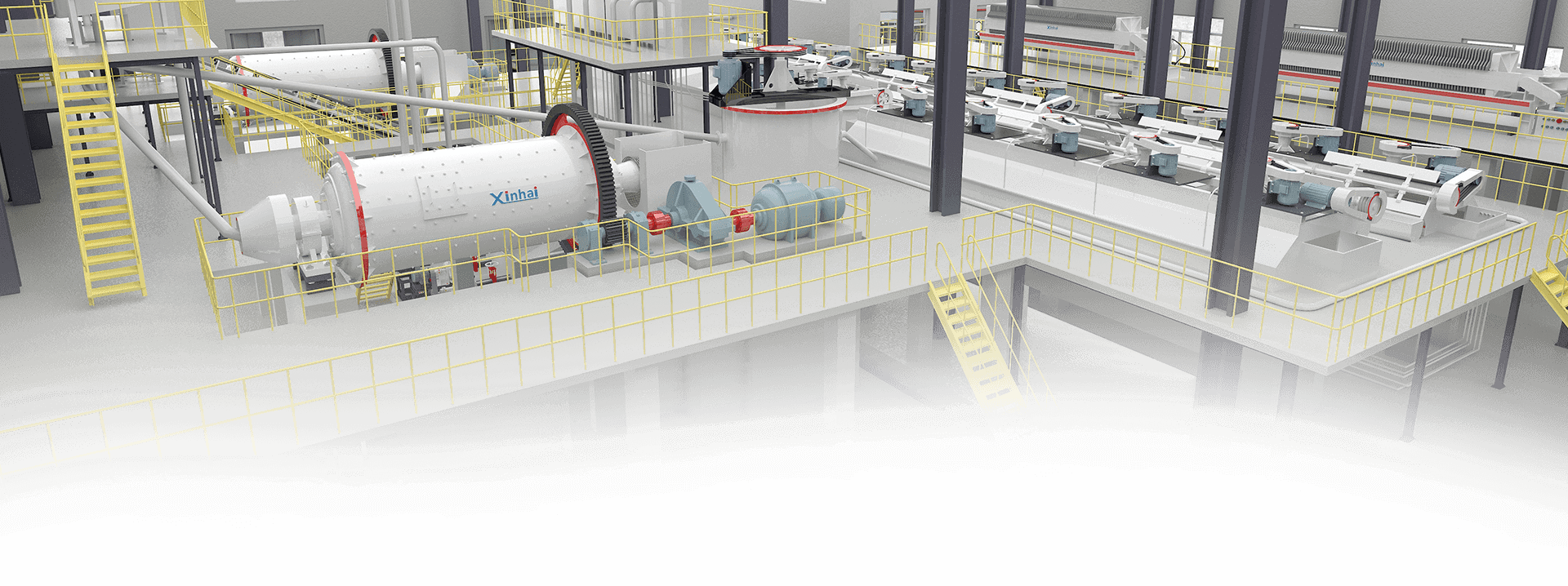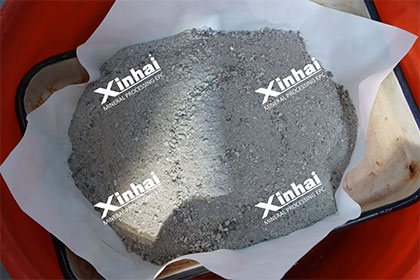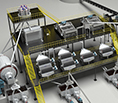Complete Guide for Gold Heap Leaching Process
 Sheena
Sheena
 Nov 13, 2025
Nov 13, 2025
 19
19
If you want to know more details about equipment, solutions, etc, please click the button below for free consultation, or leave your requirements!

Mongolian-3-million-tpa-gold-mine-heap-leaching-plant
Gold heap leaching is an extraction method that allows miners to recover gold economically from low-grade ores that would otherwise be uneconomic to process through conventional milling and flotation methods.
In simple terms, the process involves stacking crushed ore on an impermeable pad, spraying it with a leaching solution (usually sodium cyanide), and then collecting the gold-bearing solution that seeps through the heap. The gold is later recovered from this solution using adsorption or electrowinning methods.
01Why Heap Leaching Is Attractive for Gold Mining Investors
BackHeap leaching is not just a metallurgical process — it's also an economic strategy. For mining companies and investors, it provides a pathway to profitability where traditional methods would fail.
(1) Lower Capital Expenditure (CAPEX)
Compared with conventional processing plants (e.g., CIL or CIP plants), heap leaching requires far less investment in grinding, agitation tanks, and energy-intensive equipment.
Typical CAPEX for heap leaching is 30–50% lower than for equivalent milling projects.
(2) Lower Operating Costs (OPEX)
Heap leaching operations consume less electricity, water, and reagents. Most costs are related to ore stacking, reagent addition, and solution management.
This makes it cost-efficient for remote or energy-limited sites.
(3) Scalable and Flexible
Heap leaching projects can start small and expand over time. Investors can begin with a pilot heap to test recovery and cash flow potential, and then gradually scale up to full capacity.
(4) Shorter Development Timeline
Construction and commissioning of a heap leach facility are typically faster than conventional plants, allowing companies to reach first gold production in 6–12 months.
(5) Suitable for Low-Grade Ores
Heap leaching enables economic extraction from ores with gold grades as low as 0.2–1 g/t, which would otherwise be considered waste in traditional operations.
02Process Overview: How Gold Heap Leaching Works
BackStep 1: Ore Preparation and Crushing
The mined ore is crushed to a suitable particle size — usually between 10 mm and 40 mm — to ensure adequate permeability and surface exposure.
In some cases, agglomeration is performed using cement or lime to improve heap stability and uniform percolation.
Step 2: Heap Construction
Crushed ore is transported and stacked on a prepared leach pad, typically lined with impermeable geomembrane layers (HDPE or clay composite) to prevent solution leakage.
Heap height usually ranges from 5 to 10 meters, depending on ore permeability and pad design.
Step 3: Leaching Solution Application
A dilute cyanide solution (NaCN) is sprayed, dripped, or irrigated onto the top of the heap.
As the solution percolates through the ore, it dissolves gold and forms a gold-cyanide complex (Au(CN)₂⁻).
Step 4: Pregnant Solution Collection
The gold-bearing solution (Pregnant Leach Solution, PLS) flows down to the base of the heap and is collected through a network of drainage pipes and sumps.
This solution is then pumped to a recovery plant for gold extraction.
Step 5: Gold Recovery from Solution
The PLS is treated using one of the following methods:
Activated carbon adsorption (CIC/CIP) – gold is adsorbed onto carbon and later stripped by elution and recovered by electrowinning.
Zinc precipitation (Merrill–Crowe process) – used when solution clarity is high.
The recovered gold is smelted into doré bars for sale or further refining.
Step 6: Solution Recycling
After gold recovery, the barren solution is recycled back to the heap, with cyanide concentration and pH adjusted to maintain leaching efficiency.
03Key Factors Affecting Leaching Efficiency
BackOre Type and Mineralogy – Free-milling ores respond well to cyanidation, while refractory ores containing sulfides or carbonaceous material require pretreatment.
Particle Size Distribution – Uniform, moderate crushing improves permeability and contact between solution and ore.
Heap Design and Permeability – Proper stacking prevents channeling and ensures uniform flow.
Solution Chemistry – pH (>10.5), cyanide concentration, and dissolved oxygen all influence dissolution rate.
Climate Conditions – Temperature and rainfall affect solution evaporation and leaching kinetics.
Leach Cycle Duration – Depending on ore characteristics, leaching may take from 30 to 120 days.
04Economic Evaluation of Heap Leaching Projects
BackInvestors typically assess heap leach projects based on the following parameters:
(1) Ore Grade and Reserve Size
These define the overall gold output and revenue potential. Even low-grade deposits can be profitable when large-scale heap leaching is applied.
(2) Metallurgical Recovery Rate
Heap leaching recovery typically ranges between 50–80%, depending on ore type and design optimization.
(3) Reagent Consumption
Cyanide and lime consumption are major operating cost drivers. Metallurgical testing helps predict reagent requirements.
(4) Infrastructure and Logistics
Accessibility, water supply, power source, and proximity to processing plants or smelters influence CAPEX and OPEX.
(5) Environmental and Permitting Costs
Compliance with local environmental regulations, especially cyanide handling, is essential and affects both cost and timeline.
(6) Payback Period and IRR
A well-optimized heap leaching project can achieve payback within 2–4 years with an internal rate of return (IRR) exceeding 20%, especially when gold prices are favorable.
05Steps to Develop a Heap Leaching Project
BackExploration and Resource Evaluation – Define ore grade, tonnage, and mineralogy.
Metallurgical Testing – Conduct column leach and bottle-roll tests to estimate recovery and reagent consumption.
Feasibility Study (PFS/DFS) – Include capital and operating cost estimates, financial modeling, and risk assessment.
Permitting and Environmental Approval – Ensure compliance with cyanide management and local regulations.
Construction and Commissioning – Build heap pads, ponds, and recovery facilities.
Operation and Optimization – Monitor leach performance, recovery rate, and reagent use.
Closure and Rehabilitation – Rinse, neutralize, and restore heap areas for post-mining land use.
06Future Trends in Gold Heap Leaching
BackModern heap leaching is evolving with technological advancements:
Bio-oxidation and bacterial pre-treatment for refractory ores
Heap aeration systems to enhance oxidation and recovery
Automated process control using IoT and real-time monitoring
Cyanide alternatives such as thiosulfate or glycine-based leaching for eco-friendly operations
These innovations aim to improve both metal recovery and environmental sustainability, ensuring that heap leaching remains competitive in the era of responsible mining.
07Conclusion
BackGold heap leaching offers a unique balance between technical simplicity, economic efficiency, and environmental controllability.
For mining investors, it provides:
Low entry cost for new projects
Quick cash flow generation
Scalability from pilot to full-scale operations
Strong return potential even at modest gold prices
With proper metallurgical testing, sound pad design, and robust environmental management, heap leaching remains one of the most profitable and sustainable gold extraction methods in modern mining.
 +86 183 3575 8886
+86 183 3575 8886 pinklaurabao@gmail.com
pinklaurabao@gmail.com




 Message
Message Chat Now
Chat Now

















